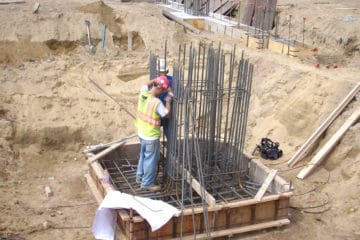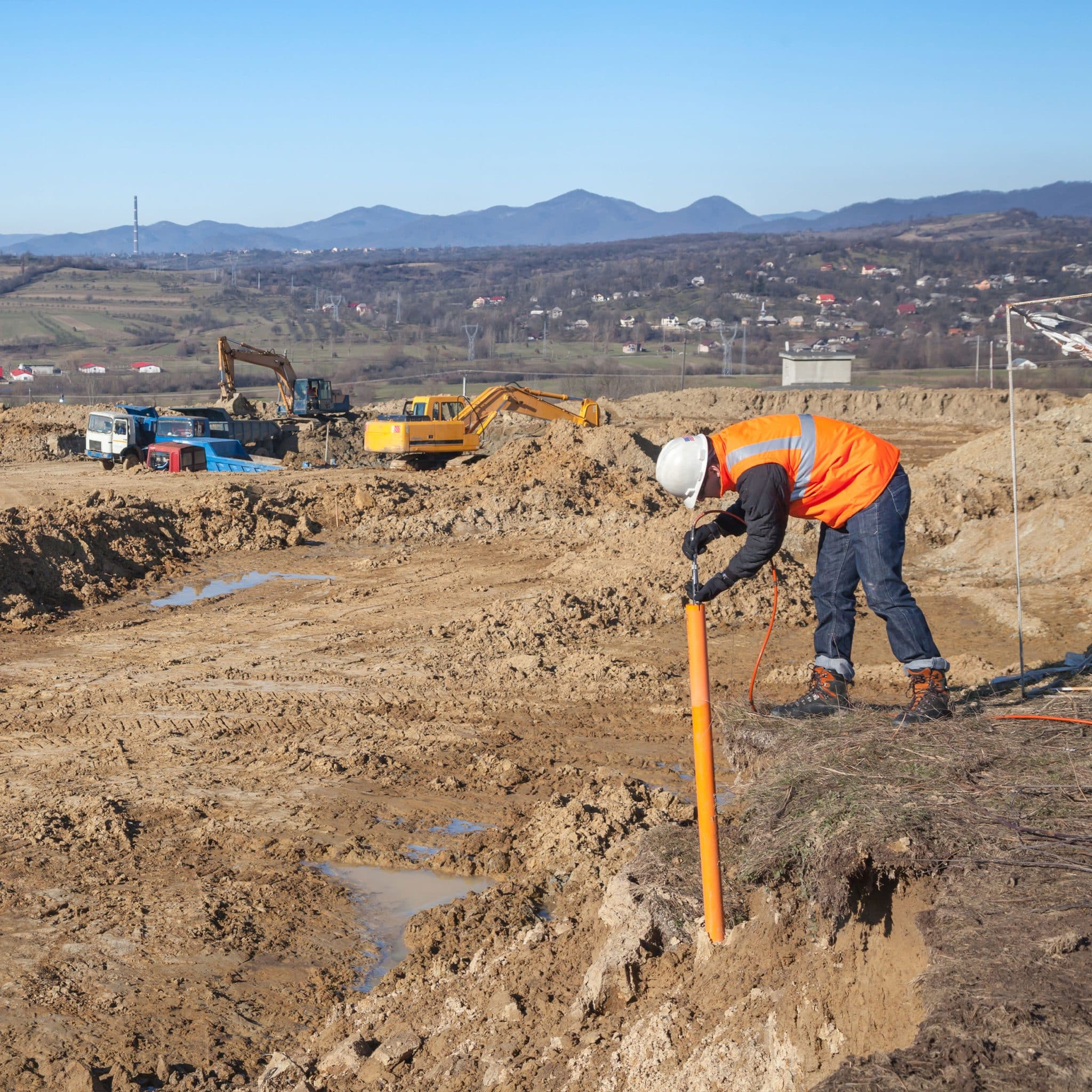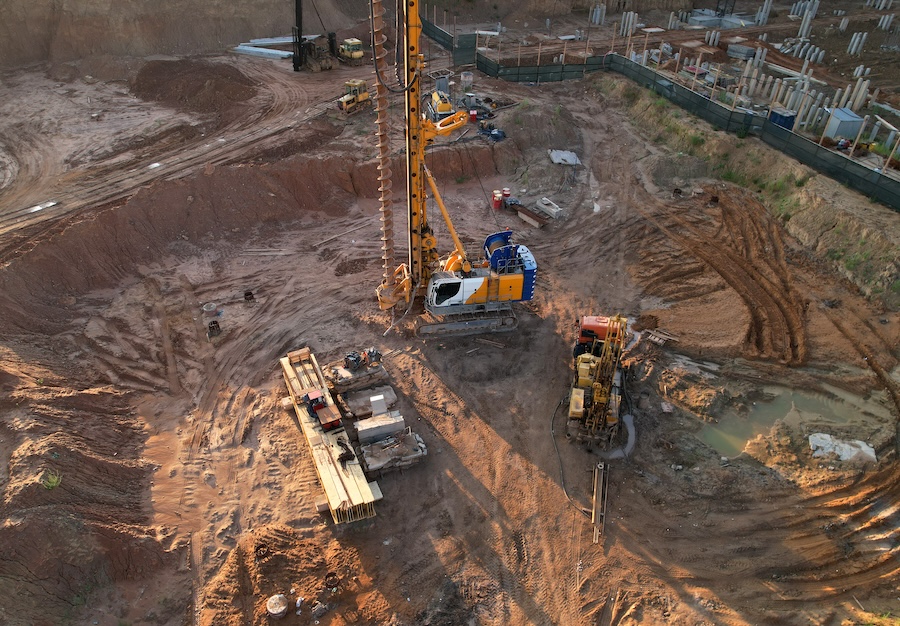Top Geotechnical Engineers for Cutting-Edge Dirt Evaluation and Structure Design
Top Geotechnical Engineers for Cutting-Edge Dirt Evaluation and Structure Design
Blog Article
Recognizing the Important Duty of the Geotechnical Market in Modern Building And Construction Projects and Facilities Advancement
The geotechnical sector is a foundation of modern building and infrastructure development, supplying essential understandings right into soil habits that straight influence project end results. Via innovative dirt evaluations and innovative design services, geotechnical specialists not just guarantee architectural stability however also address sustainability problems in the middle of evolving ecological requirements.
Significance of Soil Analysis
Dirt analysis plays an essential function in the geotechnical industry, working as the foundation for educated decision-making in building projects. Precise soil assessment is vital for figuring out the suitability of a website for different sorts of frameworks, including domestic homes, business buildings, and bridges. By assessing dirt make-up, dampness, thickness, and toughness web content, engineers can anticipate possible challenges and mitigate threats connected with ground instability, erosion, and negotiation.
The assessment process typically entails a series of tests and monitorings that supply essential details regarding the subsurface problems. This data educates the layout and construction procedures, making certain that frameworks are constructed on strong ground with adequate assistance. Recognizing the dirt account makes it possible for designers to pick proper construction approaches and materials, optimizing source use and lessening prices.
In enhancement to ensuring architectural integrity, dirt analysis adds to ecological sustainability. By recognizing possible contamination or adverse effects on bordering ecosystems, engineers can implement strategies to shield these all-natural sources. On the whole, thorough dirt assessment is essential in the geotechnical field, underpinning the safety and security, performance, and environmental responsibility of building and construction projects.
Trick Geotechnical Strategies
A selection of crucial geotechnical methods are utilized to analyze and improve the security and performance of building websites. One fundamental approach is dirt sampling and testing, which permits designers to identify the physical and chemical buildings of the ground. This information is critical for making educated choices relating to structure style and building approaches.
One more crucial strategy is website characterization, which involves the in-depth analysis of dirt and rock problems through methods such as borehole boring and in-situ screening. Techniques like Requirement Penetration Tests (SPT) and Cone Infiltration Tests (CPT) provide useful data on soil strength and stratigraphy.
Ground renovation strategies, such as dirt stablizing and grouting, are likewise vital in improving the load-bearing capability of weak soils. These methods can minimize negotiation and enhance overall site problems.
Furthermore, slope stability evaluation is vital for recognizing prospective landslide threats and ensuring the safety and security of excavations. This evaluation typically utilizes numerical modeling and limitation stability techniques to predict dirt actions under numerous conditions.
Including these geotechnical techniques right into building and construction planning not just optimizes task outcomes however additionally ensures the long-lasting sustainability of framework development.
Effect On Construction Security

Furthermore, effective geotechnical engineering involves implementing reduction strategies for recognized dangers. This might include dirt stabilization strategies, retaining structures, or drainage systems to ease hydrostatic pressure. By dealing with these variables, construction groups can lower the possibility of crashes and boost worker safety.
Additionally, continual monitoring of website problems is vital throughout construction. Geotechnical tools can offer real-time information concerning ground motion and security, allowing for prompt treatments when essential.
Fundamentally, the geotechnical industry plays an essential role in protecting construction jobs. By focusing on ground stability and employing rigorous assessment methods, the geotechnical field not only protects the workforce yet also adds to the long life and integrity of created framework.
Sustainability in Geotechnical Practices

Additionally, geotechnical engineers are now utilizing sophisticated modern technologies, such as geosynthetics, which enhance dirt stability while minimizing the quantity of material called for. This not just preserves resources however likewise results in much less waste generation (engineer of record). The assimilation of lasting layout concepts right into geotechnical design encourages making use of renewable resource resources in construction procedures, additionally decreasing carbon emissions
By carrying out these analyses, geotechnical professionals can create methods that minimize adverse effects, ensuring compliance with ecological laws. Overall, the focus on sustainability within geotechnical techniques not just contributes to the durability and durability of infrastructure but likewise promotes an accountable approach to land and resource management.
Future Trends in Geotechnical Design
Innovation is driving the future of geotechnical engineering, as arising modern technologies and methods reshape the industry. The combination of innovative data analytics and synthetic intelligence is set visit this web-site to transform site examination and danger analysis, enabling designers to make even more educated choices based upon real-time information. In addition, using geosynthetic materials is acquiring grip, offering sustainable remedies that improve soil security and lower ecological effect.
Another significant pattern is the adoption of automated and robot systems for monitoring and building processes. These innovations not only improve accuracy but also improve security by decreasing human involvement in hazardous settings. Additionally, the execution of Structure Information Modeling (BIM) in geotechnical layout promotes boosted partnership amongst stakeholders, enhancing job delivery and minimizing prices.
As climate modification postures brand-new obstacles, the sector is progressively focusing on strength and versatility in design techniques, guaranteeing infrastructure can endure severe climate occasions. Finally, the ongoing fad toward sustainability will drive development in environmentally friendly products and methods, straightening geotechnical design with broader ecological goals. Jointly, these patterns will shape a more effective, sustainable, and resistant geotechnical landscape for future projects.
Conclusion

The geotechnical sector is a cornerstone of modern-day construction and framework advancement, providing critical insights right into soil habits that directly influence project outcomes. geotechnical engineers.Soil analysis plays an essential role in the geotechnical sector, serving as the structure for notified decision-making in construction tasks. On the whole, extensive dirt analysis is essential in the geotechnical field, underpinning the safety and security, effectiveness, and ecological obligation of construction projects
Building safety and why not try this out security is substantially affected by geotechnical techniques, as the security and honesty of the ground straight impact the overall safety of a building look at here site.In verdict, the geotechnical sector is important in modern-day building and construction and framework growth, offering essential analyses that guarantee architectural integrity and safety and security.
Report this page